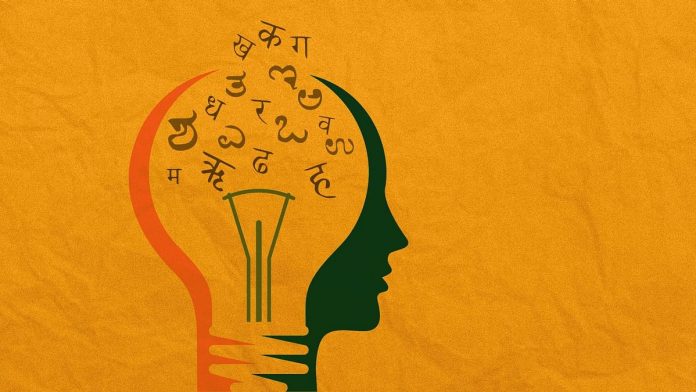The article is written by Nikhil Thakur from Manav Rachna University. The author has touched upon the bedrock principles of minority educational institutions in India along with their constitutional safeguard.
Table of Contents
Introduction
India, brought into being in 1947, was created not just by deeds, instead of by words. The fierce imaginations of its leading political actors were also literary, as their writings set out a vision of modern India.
In some way, India represents the whole world because of its vast diversity. India is the arrival of numerous dialects and different religions, and it could be a great illustration of a pluralistic society. The Government of India perceived six distinctive religious minorities, namely; Muslims (11%), Christians (2.32%), Jains (0.41%), Sikhs (2%), Buddhists (0.77%), and Zoroastrians (0.006%). The majority is Hindu (82%). By ideals of their numerical quality, the Hindus constitute the lion’s share whereas, the rest of the religious communities come beneath what is known as “religious minorities.”
Article 29–30 of the Indian Constitution stipulates cultural as well as educational rights of the minorities. These institutions are set up to ensure and advance the particular culture and convention of minority groups in India. Minority constitutes an important segment of the populace. The essential objective of the protection in respect to minority rights are:
- To form a feeling of belongingness which they shall never be overwhelmed by the majority,
- To coordinate minorities similarly into the national life of the state characterized by the ethos and intrigued of larger part, and
- To instill certainty among them.
Who is a minority
The phrase minority as mentioned under the constitution, or more specifically, under Article 30 has not been defined clearly. However, the Indian judiciary has taken a proactive role by considering the same likewise in Kerala Education Bill, 1957. However, the Supreme Court observed and decided the case on the basis of referring any community which is numerically less than 50 percent of the populace of a specific state as an entirety, then the law which is enacted to address the minority rights shall be a state law.
Furthermore, the court has opinionated that a community that may be a minority in a particular area of the state, despite the fact it is a majority within that state as an entirety, would not be treated as a minority for Article 30 of the Indian constitution.
Another approach undertaken by the judiciary was in Society for Un-aided Schools of Rajasthan v. Union of India (2012). The court held that a minority might be decided in connection to the country’s complete populace, like general laws which apply to the entire nation-for instance, the Right of Children to Free and Compulsory Education Act, 2009.
Likewise, in the case of D.A.V College v. State of Punjab (1971), the court said that if the law in address is a state law, the minorities must be decided in connection to the populace of that state.
Under S.K Patro v. State of Bihar (1969), the court was of the opinion that a minority claiming benefits under Article 30 ought to be a minority of people dwelling in India. Nonnatives who are not dwelling in India are not covered under the purview of Article 30. Thus, inhabitants in India shaping the “well-characterized linguistic and religious minorities” are dropped beneath the protection ensured via Article 30.
An eleven judge bench in T.M.A Pai Foundation & Ors v. State of Karnataka & Ors 2002 clearly has said that states have been organized on linguistic lines, minority status might be decided on state and not entire India, this applies to both linguistic as well as religious minorities.
However, more specific clarification was given under St. Stephen’s College v. University of Delhi (1992). The court observed that the minority under Article 30 of the Indian constitution must essentially mean those who frame a particular/distinct and identifiable bunch of citizens of India.
Minority educational institutions in India – an overview
Even though the Indian constitution has embedded various phrasings underneath it but woefully, it has fizzled to clarify them, and one of them is Minority Educational Institution (MEI).
Indeed, the said phrase is indicated beneath Section 2(g) of the National Commission for Minority Educational Institution Act, 2004. The said section defines MEIs as a college or an instructive institution built up and managed by a minority or minorities. In simple words, everything is managed and controlled by minorities.
The National Commission for Minority Educational Institution Act, 2004
On November 11, 2004, an ordinance was passed to enable the establishment of a National Commission for Minority Educational Institutions to advise the central government or any state government on any issue concerning minorities’ education, as well as to establish and administer educational institutions of their choice.
The objective behind the setting up of the National Commission for Minority Educational Institutions (NCMEI) has been to safeguard the instructive/ educational rights of the minorities as cherished under Article 30 of the Indian Constitution. Accordingly, the NCMEI is commanded to look into particular complaints concerning deprivation or violation of rights of minorities to set up and regulate educational institutions of their choice.
The determination of minority status, acknowledgement, connection, and related things in regards to minority educational institutions beneath the constitution clearly states that a minority educational institution proceeds to be so whether the government announces it as such or not.
When the government pronounces an educational institution as a minority institution, it recognizes a truthful position that the institution was set up and is being managed by a minority community.
Functions of the commission
The commission, to ensure efficiency in their functioning, has been entrusted with enumerated functions which are as follows:
- To advise the central as well as the state government in respect to MEIs,
- To investigate, enquire, suo moto upon the petition provided by the MEI or any other person on its behalf regarding hardship and infringement of rights of minorities to set up and regulate the MEI of their choice.
- To intervene in any proceeding of the court via taking due permission of the same where the proceedings related to hardship or infringement of educational rights of the minorities.
- To analyze, evaluate, examine, study or scrutinize the safeguards as enshrined beneath the constitution or any other law for the time being in force and further suggest measures.
- To recommend for the promotion of educational rights of the minorities.
- To recommend the Government for effective and efficient implementation of schemes or programs explicitly organized for the minorities.
- To do such other acts as may be required for discharging their function or duty.
The loopholes in the functioning
Although, the National Commission for Minority Educational Institution (NCMEI) is an exhaustive law regarding the protection and conservation of Educational rights of the Minority. Woefully, there are few loopholes in their functioning, which are as follows:
- That MEI barely has any significant independence as they get reserves from the government. Hence, there lies no autonomy. Moreover, the President of India may invalidate any choice of these colleges or institutions, but he/she has no such control/power in regards to private colleges or institutions.
- That numerous private unaided minority institutions are in a mess and enduring from mismanagement or corruption, etc.
For illustration, offering minority seats to non-minority candidates or charging huge sums of money despite the fact it is for minorities only.
- That these kinds of Minority institutions are exempted from the Right of Children to Free and Compulsory Education Act commitments and hence are driven to rent-seeking behaviour. Furthermore, for these reasons, the poorer minority segments are not able to take admission or confirmations in these institutions hence defying the entire purpose of these institutions with which they were established.
- That there are a plethora of Schools, institutions established in the name of minorities just to evade the Right to Education (RTE) Act obligations.
The Constitution of India and protection extended to the minority educational institutions
The protection extended to the minority educational institution under the constitution is mentioned under Article 30(1).
Article 30 ensures the following rights in favour of the minorities, whether religious or linguistic,
- All minorities shall have the explicit right to set up or establish and regulate educational institutions of their choice.
- The remuneration sum settled by the state for the compulsory securing of any property of minority educational institutions shall not confine or revoke the right ensured to them.
- In allowing aid, the state shall not segregate against any educational institution run or administered by minorities.
The scope of Article 30 rests on the reality that the right to set up and regulate educational institutions of their choice is ensured only to linguistic or religious minorities and not to any other group. In advance, Article 30(1) gives the right to linguistic minorities independent of their religion. Consequently, in Hindu Religious Endowments v. Sri Lakshmindra Thirtha Swamiar of Sri Shrirur Mutt (1954), the court said that it isn’t conceivable to prohibit secular education ambit of Article 30. The right beneath Article 30 moreover incorporates the right of a minority to confer education to its/their children in its/their dialect or language.
Mainly, there are three sorts of an educational institution such as:
- An institution that looks for acknowledgement/recognition along with help (which may be financial) from the state.
- An institution that looks specifically for acknowledgement/recognition but not looking for any help from the state.
- An institution that neither looks for acknowledgement/recognition nor any help from the state.
The last Institution (3rd) is independent or free to manage its affairs but subject to general laws of the country like a contract, tax, labour law, etc.
Article 30 does not secure political minorities, which are decided on numerical quality or quantity. Instead, it ensures protection to insulated segments of the society whose vote/voting may impact legislative issues but isn’t decisive/unequivocal in itself.
Under Bramchari Sidheswar Bhai v. State of West Bengal (1995), the court was of the opinion that Ramakrishna’s mission as a religious denomination does not form a minority; instead, it forms or is a part of Hindu religion and hence cannot seek benefits enshrined under the Article 30 of the Indian constitution.
The Supreme court in SP Mittal v. Union of India (1983) opined that any community who admires to claim benefit under Article 30(1) of the Indian Constitution shall show or determine:
- That they are religious/linguistic minority or
- That they have established it and are managing the same.
From the above judgment, it was made clear that any institution seeking recognition under Article 30(1) of the Indian Constitution shall show that the institution is established for religious/linguistic minorities, and they manage the same.
Choice
The right conferred on minorities is to set up educational institutions of their choice. It does not say that minorities based on religion should build up educational institutions for teaching religion or that linguistic minorities should have the right to set up educational institutions for educating their language, as it were.
The article takes it off to their choice to set up such educational institutions as will serve both the reason, to be specific, the reason of conserving the religion, dialect or culture conjointly the reason of giving an intensive standard education to their children as stated in Kerala Education Bill, 1957.
In TMA Pai Foundation v. The State of Karnataka (2002), the court specifically held that the minorities are empowered enough to establish or set up educational institutions of any form or kind, whether in school or college, technical and professional institutions.
However, more clarifications were given under St. Stephen’s College v. University of Delhi (1992). The court observed that these minority institutions could not have these rights under Article 30, particularly for their benefit, unless they received no aid or recognition/acknowledgement from the State.
Establish and Administer
Both the above-mentioned terms, “Establish” and “Administer” shall be read together, which implies that the minorities shall have the right to establish their educational institute along with this, they shall have the right to administer the same, as observed in TMA Pai Foundation v. State of Karnataka (2002).
An institution established by minorities and receiving aid from the state will not lose its minority character upon admitting any other community or section. In such a case, Article 30 shall be reconciled along with Article 29(2), which ensures no citizen be restricted from admission in any educational institution, as observed in Kerala Education Bill, 1957.
In the St. Stephen College case, the court was of the view that minorities managing the educational institution might reserve 50 percent seats for its community. However, later in the TMA Pai Foundation case, the situation was turned down, and the court observed that the “right percentage could not be stipulated” and hence held it shall be left upon the authorities to determine the same on the basis of population, type of institution and educational need of the minorities.
Current scenario and possible future
As of late, the preeminent court held that the state has the right to introduce an administrative administration or regulatory regime within the purview of national interest to supply minority educational institutions with well-qualified instructors to accomplish brilliance in education. The Supreme court said that the new regulatory regime shall ensure a balance between:
- Excellence in education and
- Rights of minorities to establish and administer.
In the said case, the Supreme court further divided education into two categories, namely:
- Secular education, which is common to all or
- Education is aimed at conserving, preserving, and protecting the heritage, culture, etc., of religion or linguistic community.
The Supreme court supported the maxim “Maximum latitude” when we talk about minority education, and hence administration or the management shall be granted the power to appoint instructors or teachers.
Moreover, in 2016 the central government of India filed a novel petition before the Supreme court to revoke the minority status of central universities. Hence, the law ministry has recommended revoking the National Commission for Minority Education Institution (NCMEI) status of Jamia Millia Islamia (In 2011). Even in 2006, the minority status of Aligarh Muslim University was revoked.
Hence, more autonomy shall be granted to these institutions or universities, and the Supreme court shall consider exemption upon all minority institutions regarding the RTE Act; along with this, all the administrative irregularities shall be removed.
Conclusion
Minority Institutions in India play a major role to fulfil the objectives of the state and minorities. However, woefully, minority institutions are not up to the mark as they were anticipated. But, now is the appropriate time or chance for the minority institutions to examine/analyze the RTE Act and its Amendments to keep themselves upgraded and updated. Further, it shall fulfil the purpose or objective of the state to ensure or assure quality education or instructions to minorities.
The rights, as enshrined under Article 30 in favour of the minority, are to ensure equality with that of the majority, and hence, it is not intended to put them in any favourable or advantageous position against the majority.
References
- Indian Society For Civil Services Main Examination GS Paper I, by Kumar N. Senthil and Rijesh S.
LawSikho has created a telegram group for exchanging legal knowledge, referrals, and various opportunities. You can click on this link and join:













